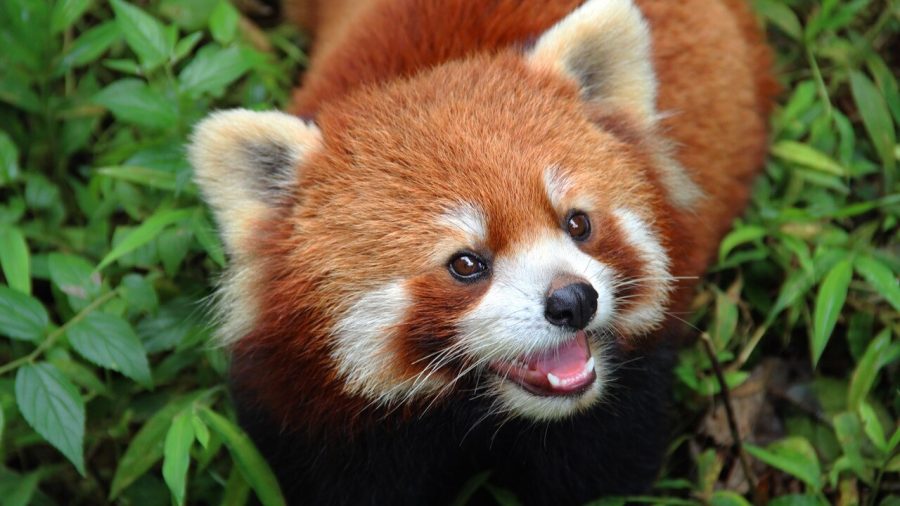Endangered Animals: An Earth Day 2023 Feature
In recognition of Earth Day on April 22nd, here is a list of ten animals that are currently endangered.
This Saturday, April 22nd is Earth Day! It is a day to celebrate the beautiful earth that we all share. What is Earth, of course, without its amazing animals? Unfortunately, some of them are in danger of going extinct. Read on to find out more about ten of these wonderful species.
1. Black Rhino (Critically Endangered)
There are five different species of rhinos. Of the five, three of them are listed on the endangered species list, including the Black Rhino, which is listed as critically endangered. Slightly smaller than White Rhinos, the Black Rhinos have two horns growing on the tops of their noses. There are a little over 6,000 of them left, with much of their population being eliminated due to European hunters and settlers in the 20th century. The population has increased greatly from what it was in the 1990s (there were only about 2,500 left), but more needs to be done to get them out of the endangered zone.
2. Vaquita (Critically Endangered)
Another critically endangered species is the Vaquita. Vaquitas are small porpoises native to the waters of Mexico and they are the rarest ocean mammals. There are believed to be only about 10 of them left due to illegal fishing operations that leave them trapped in nets, but there are efforts currently underway to increase their numbers.
3. African Wild Dog (Endangered)
The African Wild Dogs are known for their trademark enormous ears and speckled fur. What is not quite as known about them (at least to me) was that they are currently on the endangered species list. In fact, there are only about 1,409 of them left. As their name suggests, they are native to the continent of Africa, and primarily inhabit Southern Africa and the Southern part of East Africa. Much of the reason for their decline in population is due to habitat loss and accidental killings of them at the hand of humans.
4. African Forest Elephant (Critically Endangered)
There are two different species of African Elephant—the African Savanna and African Forest. Both of them are endangered, but the African Forest Elephant is listed as being critically endangered. This is due in part to their slow reproduction rates and deforestation. Deforestation affects them especially, because they are elusive, and prefer to live in the jungles of Africa. The elephants themselves are actually doing a lot though to help reverse the effects of deforestation, since they are known to disperse seeds all over the forest from the fruit that they eat.
5. Red Panda (Endangered)
Without a doubt, the Red Panda is one of the cutest animals featured on this list. They have adorable teddy bear-like faces with reddish-orange fur. On their heads, they have scattered white markings. Many of them reside in the Himalayas and spend much of their time climbing trees. At this time, there are estimated to be less than 10,000 Red Pandas left. Much of their decline is due to their accidentally getting caught in traps that were meant for other animals, and poaching as well because of their fur.
6. Blue Whale (Endangered)
The Blue Whale is not only the largest animal in the ocean, but the largest animal on Earth, measuring in length at up to 100 feet long, and weighing approximately 200 tons. What isn’t large, however, is their numbers. There are estimated to be anywhere from 10,000-25,000 Blue Whales out in the wild. Some of the reasons that their numbers are falling, are because of ship strikes and the whales becoming entangled in fishing gear.
7. Galapagos Penguin (Endangered)
While many people think of penguins as only residing in the South Pole, this is simply not the case. One of the species that lives elsewhere is the Galapagos Penguin, which live in the Galapagos Islands of Ecuador. Another unique thing about this species of penguin, is that they are the only ones to live north of the equator. At the moment, there is thought to be less than 2,000 of them left, which is a result of pollution and disease.
8. Bornean Orangutan (Critically Endangered)
There are three recognized subspecies of the Borneo Orangutan left: the Northwest, Northeast, and Central, with the Northwest having the smallest population, and the Central having the most. Part of why their endangerment is such a problem, is because like the African Forest Elephants, they are major dispersers of seeds. Without them, forest growth will not take place at the same rate as it used to. There are numerous problems which impact the numbers of the Borneo Orangutans. Some of them include logging, wildfires, hunting, mining, and the pet trade.
9. Monarch Butterfly (Endangered)
One of the most recognizable species of butterfly is the Monarch Butterfly, famous for their beautiful orange wings. Unfortunately, they are also on the endangered species list. The only plant that monarch butterflies will lay their eggs on is milkweed and is their young’s only source of food. Milkweed everywhere is getting destroyed, mostly because of urban planning, which means there is nowhere left for the butterflies to lay their eggs.
10. Amur Leopard (Critically Endangered)
The final species I will be going over is the Amur Leopard. The species is very rare, and unlike other leopards, they live in the Russia Far East. They are known to be very fast and agile, and also are referred to as the Far East leopard, Manchurian leopard, and Korean leopard. There are thought to be just over 84 of these leopards left, because of poaching for their fur and decreased prey available to them. Much is being done at the moment to increase their population, including promoting responsible forestry practices and rerouting future oil pipelines.
What You Can Do
On the World Wildlife Fund’s (WWF) website, you can donate money to their conservation and animal protection endeavors. You can also “adopt” an animal with the proceeds going to protecting endangered species.
Sources
All of the information came from World Wildlife Fund, an organization dedicated to protecting vulnerable animals everywhere.
Link to the WWF’s website:
https://www.worldwildlife.org/
A full list of endangered and vulnerable species is linked below:
https://www.worldwildlife.org/species/directory?direction=desc&sort=extinction_status
Your donation will support the student journalists of Dakota High School. Your contribution will allow us to purchase equipment and cover our annual website hosting costs.

Alyssa is so excited to start off her senior year writing for the Dakota Planet. As a first-time staff writer, she hopes her experiences writing for the...










